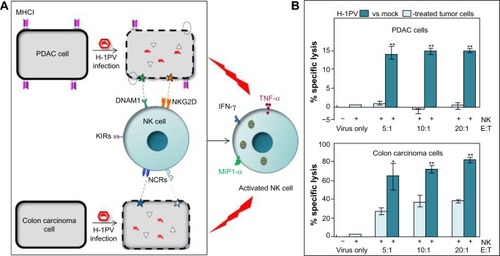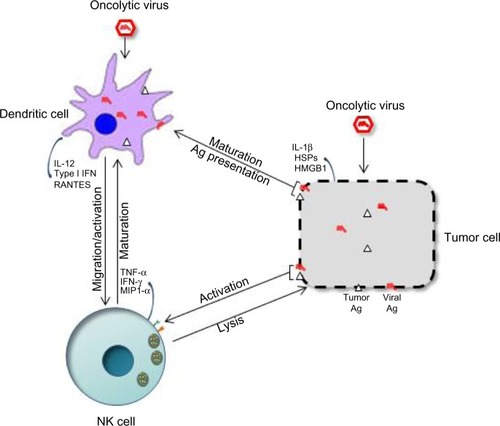Figures & data
Table 1 NK cell activatory and inhibitory receptors
Figure 1 Schematic presentation of the indirect immunostimulating effects of protoparvovirus H-1PV on human NK cells.
Abbreviations: H-1PV, H-1 parvovirus; IL, interleukin; IFN, interferon; TNF, tumor necrosis factor; NK, natural killer; MIP1-α, macrophage inflammatory protein 1 alpha; KIRs, killer inhibitory receptors; NCRs, natural cytotoxicity receptors; DNAM-1, DNAX accessory molecule-1; NKG2D, natural-killer group 2, member D.

Figure 2 Crosstalk between natural killer (NK) cells, dendritic cells (DCs), and tumor cells in oncolytic virotherapy (OVT).

